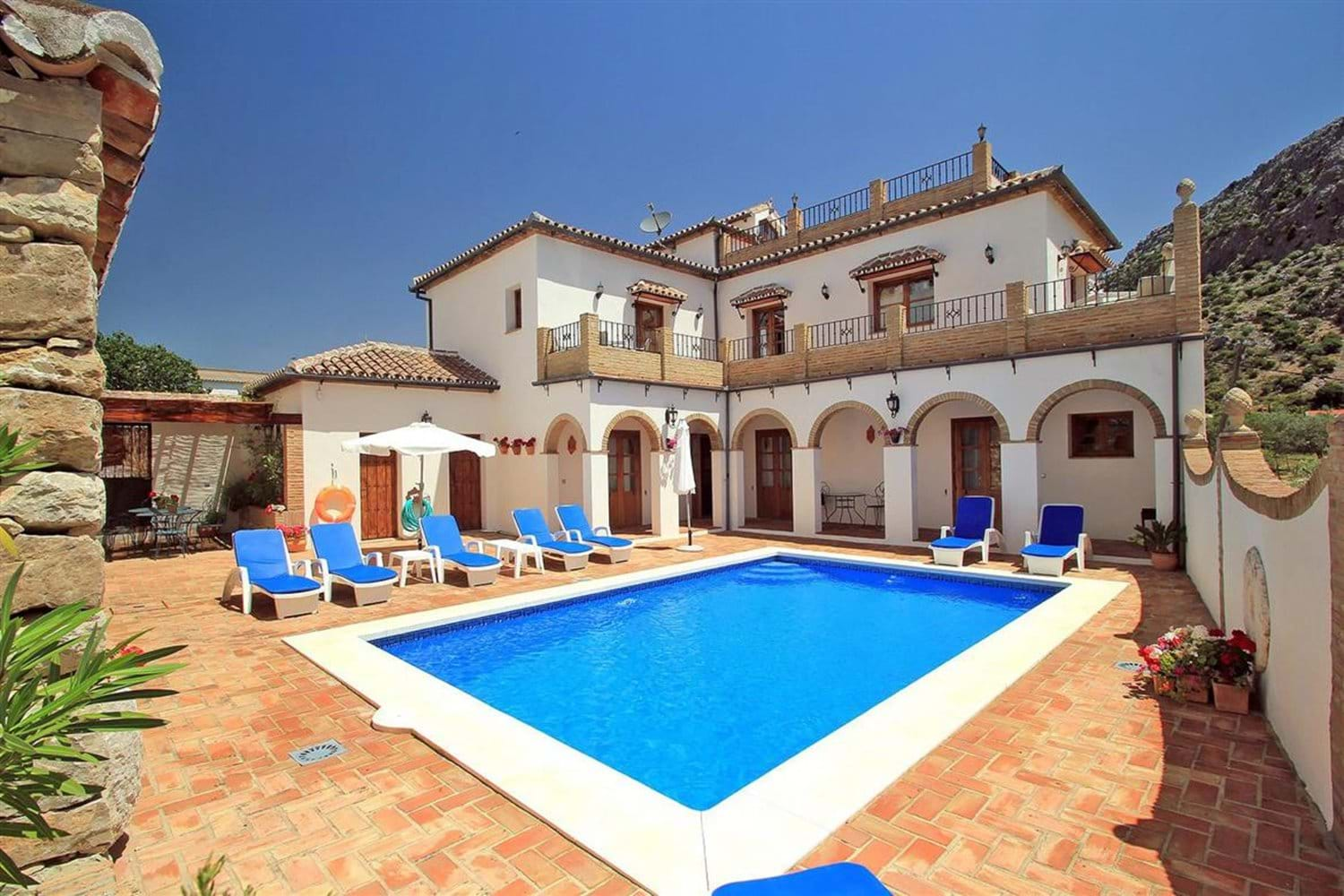
Local Area Information
Montejaque
You couldn't be in a better location if you're wanting to escape the Costa crowds. It's a charming, traditional Andalucian ‘pueblo blanco' (white village) with some of the friendliest and most welcoming locals you'll find anywhere in Spain.
The village is a maze of narrow streets, the old quarter of the village is still very quaint, and some open doorways give hints as to how rural Spaniards lived throughout this area until very recently. Many of the houses are absolutely tiny, perched on the side of the hill in winding narrow streets virtually impassable to motor traffic. The main square is a delightful spot for a drink, tapas or a meal and to people watch as much of the population passes through at regular intervals, this is real Spain!
At the last count there were 11 bars / 3 restaurants in Montejaque, not bad for a village with a population of a little over 1,000. You won't find too many English-speaking people here, but the locals are always happy to welcome outsiders.
Montejaque is set in the stunning mountainous scenery of the Serrania de Ronda and Sierra de Grazalema National Park. There is walking and a whole range of outdoor activities. These include rock climbing, mountain biking, horse riding, paragliding, kayaking, hiking and walking in the mountains and valleys. Above the village eagles and vultures soar on the thermals on the rocky mountain face of El Hacho (the Axe), the area is a a bird watching and botanists’ mecca. At the nearby Caves at Piletta, you can see early pre-historic cave paintings. An absolute must – but don't expect a slick guided tour and stylish gift shop. It's much better than that!
Ronda
You'll probably spend quite a bit of time in the beautiful town of Ronda, just a 15minute drive away. It is one of the most beautiful and visited cities in Spain. Surrounded by lush river valleys and sitting above a deep ravine, it is a place that literally takes your breath away when seeing it.
Let it get under your skin. Here you'll find restaurants aplenty, one of the oldest bull rings in Spain (well worth a look, even if you hate the idea of the ‘sport') and Ronda's main attraction, El Tajo – the famous, dramatic and enormous, stunning gorge. Linger on the Puente Neuvo and dare to look down into the gorge's depths.
There are many wonderful bars and restaurants ranging from simple tapas to fine dining including a Michelin star restaurant, museums, a good selection of shops including specialist food stores and shops selling other essentials.
Whether you're an expert or aficionado of fine wine, don't miss out on discovering the wines produced in and around the Serrania de Ronda mountains, they are available in most of the bars and restaurants. Ronda wine has made an important comeback over the last decade and one of the most popular things to do in Ronda is to visit the local vineyards and taste Ronda wine. A wine route known will have you passing through stunning landscapes, tasting wine in beautiful bodegas, there are approximately 20 in Ronda producing delicious red and white wines, some of which have won international prizes.
Ronda has a year-round cultural programme with concerts and other events. The highlight of the year is the Ronda Fair, which takes place at the end of August and runs into early September. Held in honour of the 18th century bullfighter Pedro Romero, the fair includes a week of celebrations that include the nationally famous Goya-esque bullfights when bullfighters and spectators dress up in costumes from the painter Goya’s time.
Surrounding area
If you can drag yourself away from the snail's pace village life of Montejaque or the buzzing atmosphere of Ronda, there are some pretty pueblo blancos to discover or why not go on a day trip further afield, the magnificent cities of Granada, Malaga, Jerez or Seville. Or visit El Caminito de Rey and walk along the high pathway that used to be the most dangerous in the world! If you want to sample some beach life, the coast of Marbella is just under an hour away or one and a half hours to the Costa de Luz.
When people talk about the famous white villages of Spain, they do in fact mean those of Andalucia – and a certain part of Andalucia, at that. The white villages are all around the Serrania de Ronda and some of the most attractive are within easy reach of Montejaque.
"Like sugar cubes scattered down the hillside…”
Where should you start? Each village has its own character and its own customs and traditions. Visit Grazalema or Zahara de la Sierra for their stunning locations and surrounding landscapes. Setenil has cave houses, Benalauria overlooks chestnut groves and Gaucín has great views to Gibraltar and even Africa on clearer days.
Woollen blankets are made in Grazalema, cheeses in Villaluenga, sausages in Benaoján and Montejaque, almond cakes in Atajate, leather goods in Ubrique, guitars in Algodonales – and nearly all of the villages have restaurants serving typical local dishes.
Locally, in Benaojan you can visit the Cueva de la Pileta, these are caves with prehistoric paintings or visit the Cueva del Gato (cave of the cat, given its name because the cave is said to resemble the open mouth of a cat) here you can swim in crystal clear (although refreshingly cold!) waters in a beautiful natural setting. There is also a Roman amphitheatre at Acinipo, one of the best-preserved Roman theatres in Spain but unlike many of Andalucía’s honeypots, Acinipo is blissfully free of tourists – and free to enter.





